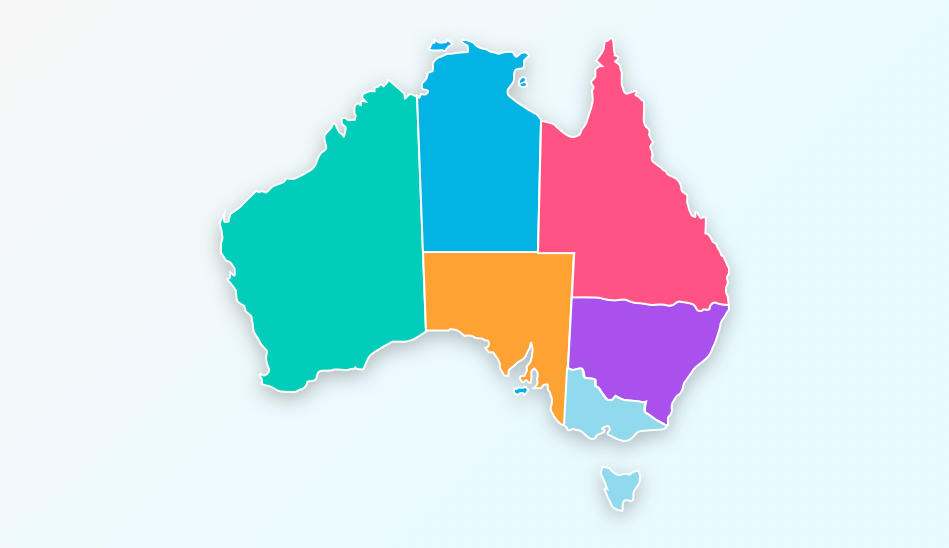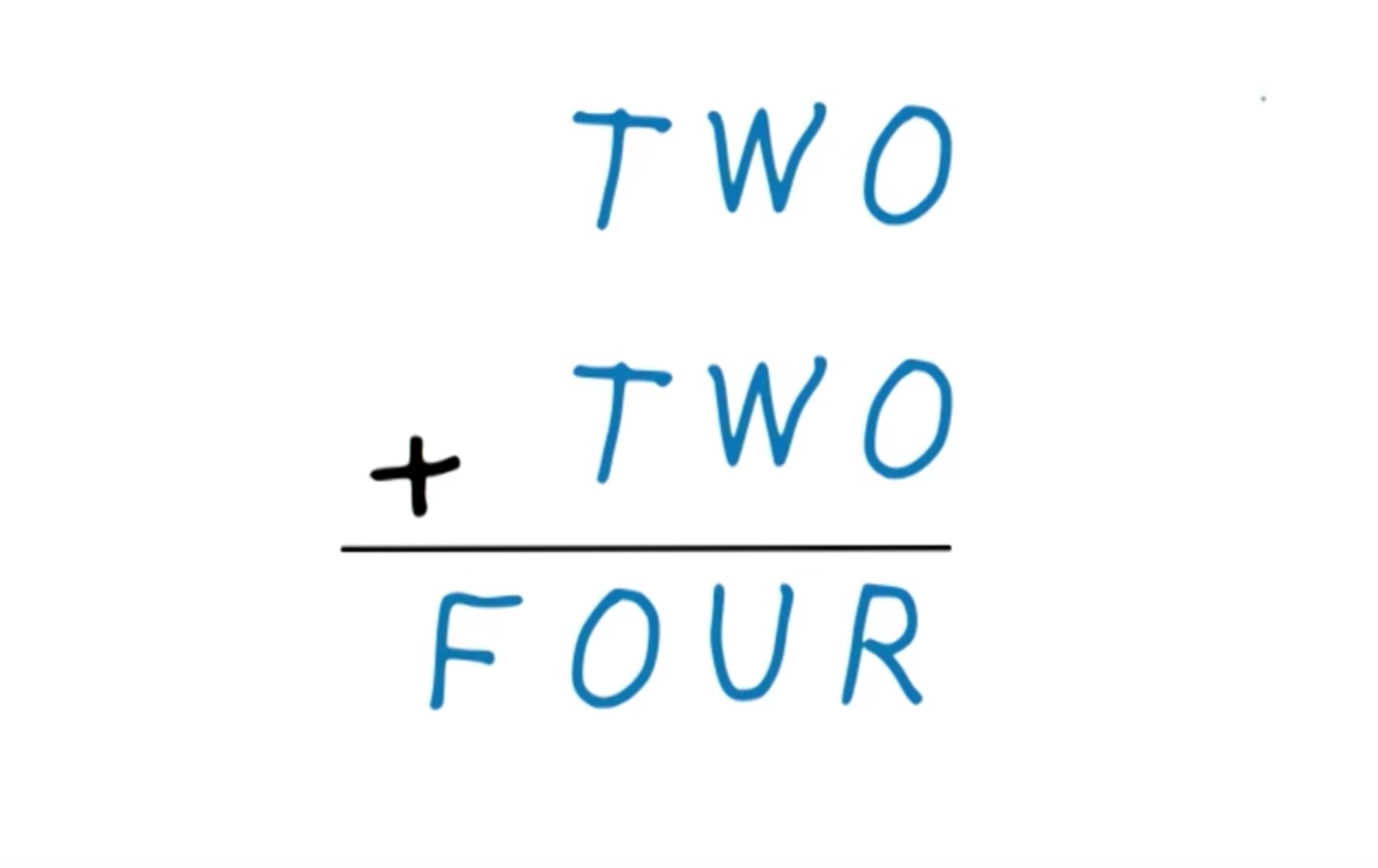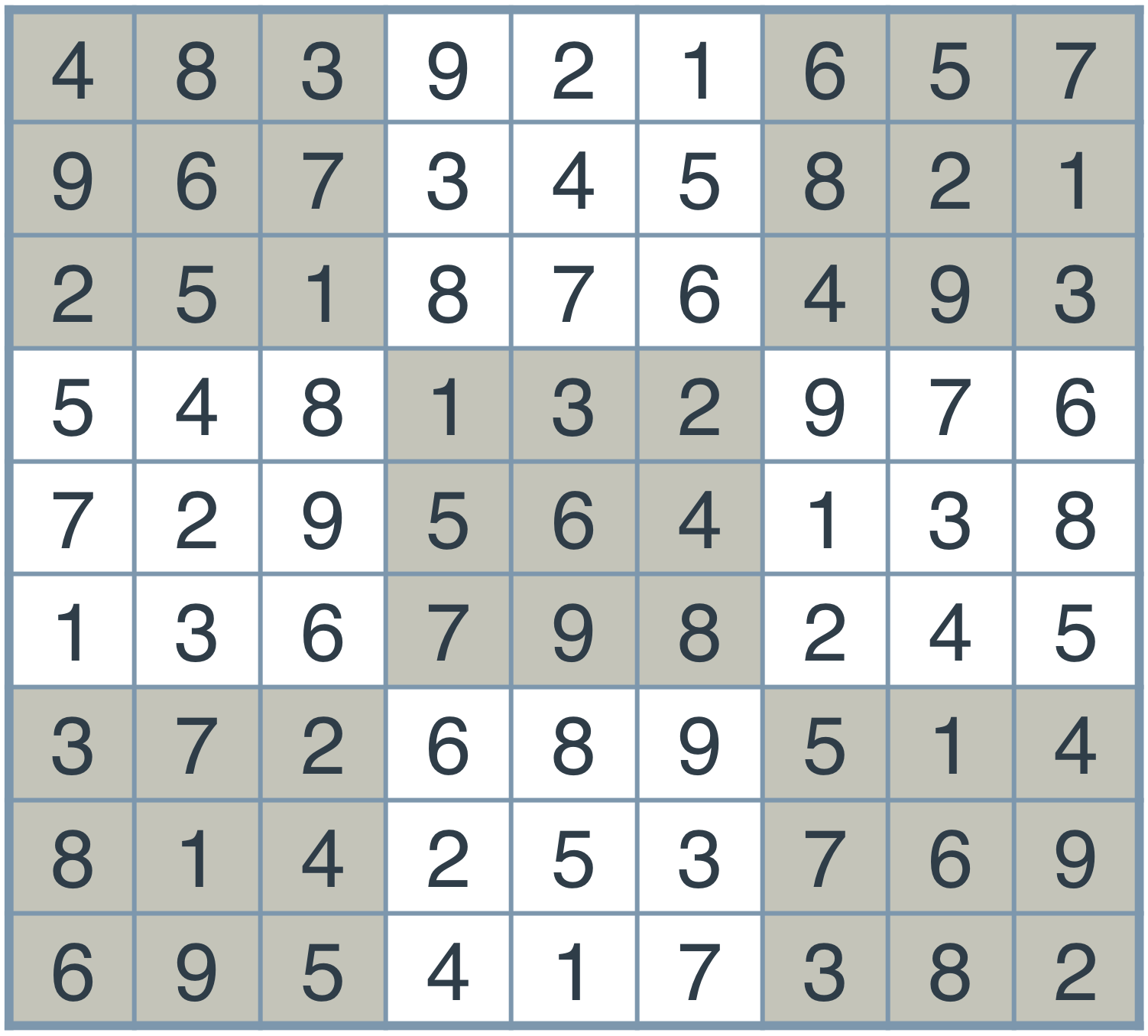07. Constraint Propagation
Constraint Propagation
If you've made it this far, you've already gained hands on exposure to a powerful technique in AI - Constraint Propagation. Constraint Propagation is all about using local constraints in a space (in the case of Sudoku, the constraints of each square) to dramatically reduce the search space. As we enforce each constraint, we see how it introduces new constraints for other parts of the board that can help us further reduce the number of possibilities. We have an entire lesson devoted to Constraint Propagation but let's quickly see some other famous AI problems it helps us solve.
Map Coloring

No two adjacent items can be the same color in the map coloring problem.
In the map coloring problem, we must find a way to color the map such that no two adjacent items share the same color. Indeed, we'll see how we use constraint propagation to use this simple constraint to find a solution just as we use such constraints to solve Sudoku.
Crypto-Arithmetic Puzzles

In the above, what digits do T, W, O, F, U, and R represent?
In Crypto-Arithmetic puzzles, each letter represents a digit, and no two letters represent the same digit. None of the numbers start with a leading zero. Our goal is to find a mapping from letters to digits that satisfies the equations. Here again, we'll find that the constraints imposed by the equation allow us to create an intelligent algorithm to solve the problem via Constraint Propagation.
Applying Constraint Propagation to Sudoku
Constraint Propagation
Now that you see how we apply Constraint Propagation to this problem, let's try to code it! In the following quiz, combine the functions eliminate and only_choice to write the function reduce_puzzle, which receives as input an unsolved puzzle and applies our two constraints repeatedly in an attempt to solve it.
Some things to watch out for:
- The function needs to stop if the puzzle gets solved. How to do this?
- What if the function doesn't solve the sudoku? Can we make sure the function quits when applying the two strategies stops making progress?
Start Quiz:
User's Answer:
(Note: The answer done by the user is not guaranteed to be correct)
So, that seemed to work! You should have got this answer.
